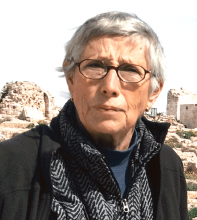You are here
Significant threat to the entire region
Aug 20,2014 - Last updated at Aug 20,2014
Despite the loss of the Mosul dam, a major reverse in Iraq, the Islamic State (IS), remains a supremely confident organisation that counts God on its side and believes that ultimately its “Islamic state” or cross-border caliphate will survive and succeed.
The recorded decapitation of US journalist James Foley in retribution for US air strikes on IS convoys and fighters must be seen as brutal bravado against air raids that turned the tide of battle around the dam against IS.
But IS will not be discouraged or deterred from its mission to establish an “Islamic state” by the loss of an important asset or of a handful or even scores of fighters.
IS leaders faced before similar shifts of fortune in warfare in both Iraq and Syria.
In recent months, IS has been gaining territory, assets and adherents, and believes history as well as God are on its side. Its leadership is both confident and optimistic.
The organisation is an offshoot of Al Qaeda in Iraq, which was largely suppressed and contained during the 2006-08 joint US-Sunni Awakening campaign in that country. However, the core group revived when Sunnis joined its ranks.
They were alienated by former Iraqi prime minister Nouri Al Maliki’s refusal to honour commitments to tribesmen who had fought the radical jihadists.
As a result of the influx of recruits, Al Qaeda in Iraq was able to mount continuous bombings and shootings against Shiites and Shiite targets by 2011 when US forces withdrew from Iraq.
In 2012, Al Qaeda in Iraq expanded its operations into Syria and in April 2013 adopted the name of Islamic State of Iraq and the Levant.
It attempted to take over Al Qaeda’s official franchise in Syria, Jabhat Al Nusra, which had been fostered by the ISIL, but the proposed merger was rejected.
The two groups initially fought side by side and in concert with other insurgent formations but fell out when the ISIL seized control of and planted its own institutions in territory captured by allied forces.
Partners were outraged in particular by the ISIL assumption of rule over Raqqa, the sole Syrian provincial capital held by insurgents.
The seizure of Raqqa was a clever move by the ISIL chief, Abu Bakr Al Baghdadi, who appears to have a good strategic grasp. He used this city as his base for operations around Aleppo and in Deir Al Zor province where his forces imposed control on the oil fields and sold crude and refined oil to both Turkish businessmen and the Syrian government, desperate for fuel.
ISIL forces also captured weapons from Syrian military bases and attracted the support of wealthy backers in the Gulf who funded certain operations as well as some Arab governments that remained determined to oust Syrian President Bashar Assad, in spite of the risks posed by the surge of ISIL and other radical jihadist groups.
Early this year, ISIL successfully infiltrated Sunni rebellions in Ramadi and Fallujah in Iraq’s Anbar province, and on June 10, ISIL forces swept into northern Iraq to capture Mosul, its arsenals, banks and oil fields, as well as Tikrit and other key towns.
While this campaign stretched ISIL forces to the limit, the organisation was reinforced by an influx of opportunistic or ideologically motivated recruits.
It is significant that about this time, Western media were alerted to the fact that ISIL not only takes territory, carries out atrocities and expels Syrians and Iraqis it deems “infidels”, such as Shiites, Yazidis, Christians and Shabaks, but also, terrifyingly, issues annual reports boasting of its brutal activities.
On March 31, ISIL issued its report covering November 2012 to November 2013, but this was largely ignored.
The report gave details about 9,540 operations or attacks in seven regions of Iraq: Salahuddin, Nineveh, south, Anbar, Baghdad, Dyala and Kirkuk.
Attacks ranged from assassinations, bombings, suicide bombings with vehicles, explosions with improvised explosive devices, sniping, strikes on checkpoints, and expulsions of defectors and deserters.
During 2013, the report claimed the highest number of cities were seized since ISIL launched its ongoing campaign.
This was the second such report and is much more detailed than the first, which accounted for 7,681 operations during the previous year.
The latest professionally produced report, 410 pages long, is packed with statistics and infographics designed to impress potential recruits, private donors and governments.
The report reveals that ISIL has a highly centralised command structure, unlike most of the other armed groups emerging from the Syria/Iraq conflict. It also shows that the organisation’s human and material resources are deployed according to an overall plan.
These reports demonstrate that ISIL — in contrast to the ragtag insurgents fighting in Syria — is a well ordered organisation and could very well be much more formidable and enduring than its adversaries believe.
Consequently, the forces now ranged against the IS must take this into account and move quickly and forcibly to eliminate this organisation.
There is no time to lose. Six months were lost when Baghdad failed to tackle the ISIL in Ramadi and Fallujah — and 18 months were squandered after the ISIL seized Raqqa due to the commitment the West and its allies have made to overthrow the Assad government without considering potentially dangerous consequences.
The brutal death of Foley should concentrate minds in the White House on the situation in Syria/Iraq and might, at long last, compel President Barack Obama and his advisers to realise that the IS is a significant threat to the entire region while the Syrian regime is not.
Washington cannot continue to ignore IS in Syria while bombing its vehicles, forces and checkpoints in Iraq.












